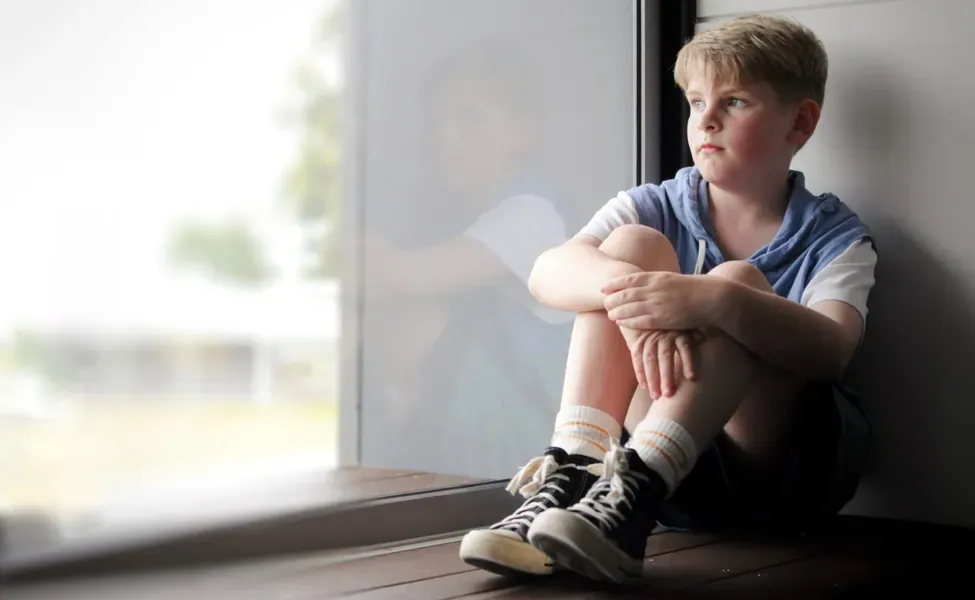Teasing Or Bullying – Can You (And Your Kids) Tell The Difference?

(This blog was originally published in February 2016)
We hear so much about bullying these days, and particularly the kind of vicious, anonymous cyberbullying that can have terrible consequences, that it’s no wonder schools are making an effort to teach kids to be nicer to each other. But we also have to be careful to not create such emotionally fragile kids that even a bit of good-natured ribbing between friends is something they can’t cope with. If kids walk away from anyone who gives them a bit of a stirring, never to speak to them again, it may not be the best outcome.
Just to be clear, I’m not suggesting that kids should have free reign to say nasty things and everyone else should just harden up. But if we can teach kids to cope with a bit of gentle teasing, there is a side benefit: they will also be learning to react in a way that can stop potential bullies in their tracks.
Is there intent?
Firstly, how do we know what’s bullying and what’s teasing? Well, a lot of it depends on the intent. Are the comments designed to hurt and upset? Is there repeated and hurtful name-calling? Is a child being ridiculed in a nasty way? Is one child being singled out and socially isolated?
All of these indicate that we’re talking about harassment and bullying of children.
That can be very distressing, and have long-term consequences. It’s not something a parent should turn a blind eye to — but at the same time, children can't control what other kids say to them. What they can learn to manage is their own reaction to it.
(As an aside, if there’s any physical element or the threat of physical harm, then this isn’t something kids should be trying to handle on their own. Speak to the school and make sure they follow through with any plans to prevent the problem from recurring. Your child may need extra help to gain skills to handle the situation and prevent it from getting worse.)
But returning to the grey area of teasing that may cross over into being hurtful, especially to a sensitive child, we need to think about the banter that goes on within peer groups.
How teasing can help build resilience
Depending on the group, there may be a bit of what we might call mutual teasing or ribbing; a bit of a gentle dig, or a laugh at one’s own or someone else's expense.
But as long as it’s not causing distress, and is seen for what it's intended to be, which is a light-hearted and equally shared around the group, then it's probably a good thing. It can build resilience, and can even be part of healthy friendships, where everyone knows they’re not perfect.
There’s always room for it to go too far, and it’s important to be aware of and sensitive to how others may feel. But at the same time, most of us have had to learn to cope with a bit of this kind of thing at school and in the workplace. What we need to remember is that some kids, especially if they’re naturally sensitive, will need more practice than others to successfully manage their emotions in such situations.
As tempting as it is to rescue a sensitive child any time they’re upset, this doesn’t help them to build resilience. And ironically enough, if a child only knows one way to react if someone calls them a nickname or has a laugh at their expense, and that is by going into emotional meltdown, they risk becoming more of a target for teasing.
What makes a bully?
One of the things that tends to perpetuate teasing — and this is where it starts to become a more abusive kind of behaviour — is that, unfortunately, there are some kids who enjoy watching the bite or reaction their words can cause. These are the kids who will up the ante and start teasing more frequently if they can see that they have the power to upset or distress someone. This is probably because they have their own issues and need to deflect that distress onto someone else. But whatever the reason, these are also the kids who are most likely to become bullies in the future.
For this reason, it’s worth keeping an eye and an ear on what goes on between siblings and friends and doing something about this behaviour early on. So don't always assume that the version of the facts your child is giving you is all you need to know.
LIttle angels?
Not all kids who are on the receiving end are 100 per cent little angels and sometimes it’s a situation that’s been allowed to escalate over time. It might be worth having a conversation with your child about what happened and what they could do instead that might lead to a better outcome.
For the child being teased, parents can help kids to understand that while light-hearted banter is part of life, when it spills over into comments that could be hurtful, learning how to handle it can make it much less of a problem.
Tips for little kids and big kids
If we’re talking about pre-school or little kids, it’s important for them to learn that a lot of the teasing in their peer group doesn't really mean anything. It's not meant to be hurtful or upsetting when someone laughs if your sandcastle collapses, for example. And youngsters who learn to not only respond with a laugh when they’re teased but also give a little of it back, without the intent to hurt, do much better socially.
If an older child is being “picked on” at school, for example because of something to do with their physical appearance, while it’s unfair and unpleasant, it may be best for them to learn to have a ready response to it. So they may reply with something like: “I'm glad you've noticed my glasses. I like them.” Or “Yes, you’re right. It’s not a big deal,” or a sincere “thank you – thank you so much!”, no matter how odd this may sound in response to something like “you’re fat” or “gee, you’re ugly”.
What you’re teaching your child to do is flip it around. They’re neutralising the comment and giving a message to the teaser to say: “This is not working. It is not having the intended effect. I can even have a laugh about it”. You might also look on the internet for resources to help your child learn to make an assertive — not passive, nor aggressive — request for the problem behaviour to change.
We’re helping kids to learn different ways of reacting. The person who is doing the teasing isn’t getting their desired result of seeing their target distressed or upset. Often this alone will be enough to stop these kinds of comments, although the child may have to be prepared to persevere a little before the strategy works.
(It may not be a bad idea if at the same time, the school gives a general reminder to all the kids about not making hurtful comments. You might also need to ask for some stronger supervision in the playground for a while if there seems to be a particular problem with one or two children.)
Preparing kids to cope with life (on their own)
If the problem continues, you may need to get some professional help from the school counselor or a psychologist. The aim of the game is not to take over and fix the problem but to help your child develop the necessary skills and strategies to deal with the situation.
Because when it comes to teasing, there is one very important message as parents we do need to get across to our kids: you can deal with this. That’s a message of empowerment. It’s a message that the solution is within their grasp.
Ultimately, that’s going to help them cope with life’s little unpleasantries later on, without becoming upset or aggressive…and without needing your help.

